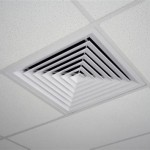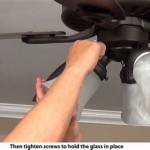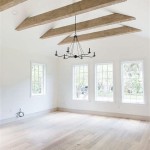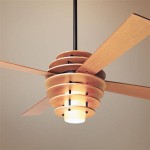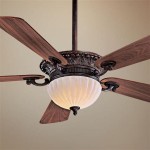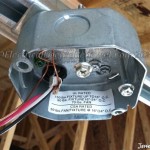Noise Cancelling Insulation for Basement Ceilings: A Comprehensive Guide
Basements, often relegated to storage or laundry areas, are increasingly being transformed into functional living spaces. Home theaters, guest rooms, home offices, and playrooms are common uses that enhance a home's value and usability. However, the location of the basement, directly below the main living areas of the house, presents a significant challenge: noise control. Footsteps, conversations, and activity on the main floor can transmit loudly through the floor joists and into the basement, and vice versa. Effective noise cancelling insulation installed in the basement ceiling is crucial to creating a comfortable and usable living space.
The effectiveness of noise cancelling insulation is determined by several factors, including the type of insulation used, the installation method, and the existing structural composition of the floor above. A comprehensive approach that addresses both airborne and impact noise is essential for optimal results. This article will delve into the various types of insulation suitable for basement ceilings, discuss installation techniques that maximize their noise reducing properties, and address the broader considerations necessary for effective soundproofing.
Understanding the Types of Noise
To effectively combat unwanted sound, it is important to first understand the different types of noise and how they travel. Generally, noise can be categorized as either airborne or impact noise.
Airborne Noise: This refers to noise that travels through the air, such as conversations, music, or television sounds. Airborne noise travels in waves and can easily penetrate thin or porous materials. Common sources of airborne noise above a basement ceiling include speech, music from speakers, and the general din of a busy household.
Impact Noise: This type of noise is caused by direct physical impact on a surface, such as footsteps, objects dropped on the floor, or furniture being moved. Impact noise travels through the structure of the building itself, vibrating the floor joists and radiating sound into the space below. This type of noise is typically more problematic in basement settings than airborne noise, as it is often perceived as louder and more disruptive.
Effective noise cancellation strategies must address both airborne and impact noise. The insulation methods described below will outline how to mitigate the effects of each.
Choosing the Right Insulation Material
Selecting the appropriate insulation material is paramount for achieving effective noise reduction in a basement ceiling. Several types of insulation offer varying degrees of soundproofing capabilities. These include fiberglass batts, mineral wool, spray foam, and specialized soundproofing products.
Fiberglass Batts: Fiberglass batts are a common and relatively inexpensive insulation option. They are generally made from recycled glass and come in pre-cut sizes to fit between standard floor joists. While fiberglass batts offer some degree of sound absorption, particularly in the mid-range frequencies, they are not the most effective for reducing low-frequency impact noise. Their performance can be improved by using thicker batts with a higher density and ensuring they are installed without gaps or compression.
Mineral Wool: Mineral wool, also known as rockwool or slag wool, is a superior option for noise reduction compared to fiberglass. It is denser than fiberglass and possesses excellent sound absorption properties across a broader range of frequencies. Mineral wool is also fire-resistant and environmentally friendly, often made from recycled materials. The higher density of mineral wool provides better sound damping, making it more effective at reducing both airborne and impact noise. Like fiberglass, mineral wool is available in batts and rolls, facilitating relatively easy installation between floor joists.
Spray Foam Insulation: Spray foam insulation comes in two primary types: open-cell and closed-cell. Closed-cell spray foam is denser and offers better insulation value and moisture resistance than open-cell foam. However, open-cell spray foam is often favored for soundproofing due to its softer, more pliable structure, which effectively absorbs sound waves. Spray foam creates a seamless barrier, filling every crack and crevice, preventing sound from flanking the insulation. While spray foam can be more expensive than batts or rolls, its superior soundproofing qualities and air sealing benefits can justify the investment.
Specialized Soundproofing Products: For maximum noise reduction, specialized soundproofing products are available. These include soundproof panels, resilient channels, and sound damping compounds. Soundproof panels are typically dense, mass-loaded vinyl (MLV) or compressed fiberglass boards designed to block sound transmission. Resilient channels are metal strips that decouple the drywall from the floor joists, reducing the transfer of impact noise. Sound damping compounds, also known as viscoelastic damping compounds, are applied to surfaces to reduce vibrations and resonance. These products are often used in combination to create a highly effective soundproofing system.
Installation Techniques for Optimal Noise Reduction
Even the best insulation material will not perform optimally if it is not installed correctly. Proper installation techniques are crucial for maximizing the noise reducing properties of the chosen insulation. Attention to detail and careful execution are essential for creating a soundproof basement ceiling.
Filling Cavities Completely: Regardless of the insulation type, it is imperative to fill the cavities between the floor joists completely. Gaps and voids allow sound to bypass the insulation, reducing its effectiveness. When using batts or rolls, ensure they are cut precisely to fit the space snugly, without compressing the material. For spray foam, ensure even and thorough coverage of the entire cavity.
Addressing Flanking Paths: Flanking paths are routes by which sound bypasses the insulation. Common flanking paths include air gaps around pipes, wires, and ducts. To address these paths, seal all penetrations with acoustic caulk or sealant. Wrap pipes and ducts with sound damping materials to reduce vibration and noise transmission.
Decoupling the Drywall: Decoupling the drywall from the floor joists is a highly effective technique for reducing impact noise. This can be achieved using resilient channels, which are metal strips that create a physical break between the drywall and the joists. The resilient channels absorb vibrations, preventing them from being transmitted through the drywall and into the room. Install the resilient channels perpendicular to the floor joists, spacing them according to the manufacturer's instructions. Attach the drywall to the resilient channels, not directly to the joists.
Adding Mass: Increasing the mass of the ceiling assembly can significantly improve its soundproofing capabilities. Adding a layer of mass-loaded vinyl (MLV) between the insulation and the drywall can effectively block sound transmission. Alternatively, using two layers of drywall, with a layer of sound damping compound between them, can also provide a substantial increase in mass and sound reduction.
Suspended Ceilings and Soundproofing: While suspended ceilings are common in basements, standard suspended ceiling tiles offer minimal soundproofing benefits. Replacing standard tiles with acoustic ceiling tiles or adding a layer of mass-loaded vinyl above the tiles can improve sound absorption and reduce noise transmission. However, a suspended ceiling alone is generally not sufficient for effective soundproofing and should be combined with other insulation methods.
Beyond Insulation: Addressing Other Noise Sources
While insulation plays a crucial role in reducing noise transmission, addressing other potential noise sources is important for creating a truly quiet basement environment. This includes considering the condition of the flooring above, the presence of mechanical equipment, and the soundproofing of doors and windows.
Flooring Above: The type of flooring installed on the main floor significantly impacts the amount of noise transmitted to the basement. Hardwood floors, tile, and laminate flooring tend to transmit more sound than carpet. Adding a thick underlayment beneath hard flooring can help reduce impact noise. Consider using area rugs or carpeting in high-traffic areas to further dampen sound.
Mechanical Equipment: Furnaces, water heaters, and other mechanical equipment located near the basement ceiling can generate significant noise. Vibration isolation pads can be placed under the equipment to reduce vibrations transmitted through the floor. Enclosing the equipment in a soundproof enclosure can further reduce noise levels. Ensure all ductwork is properly insulated to minimize noise transmission.
Doors and Windows: Doors and windows are often weak points in a soundproofing system. Ensure doors are solid-core and well-sealed. Weather stripping can be used to seal gaps around the door frame. Consider using soundproof curtains or blinds to reduce noise transmission through windows. Adding a second layer of glazing to windows can also improve their soundproofing performance.
Addressing Plumbing Noise: Pipes running through the basement ceiling can also be a source of noise. Water hammer, the sudden increase in water pressure when a valve is closed, can create loud banging sounds. Installing water hammer arrestors can help mitigate this issue. Insulating pipes with pipe wrap can also reduce noise transmission and prevent condensation.
By carefully considering these factors and implementing appropriate noise reduction strategies, it is possible to transform a basement into a quiet and comfortable living space. The combination of effective insulation, proper installation techniques, and attention to other noise sources is the key to achieving optimal results.
Effective noise cancelling insulation significantly enhances the usability and enjoyment of a basement space. A well-insulated basement ceiling not only reduces unwanted noise from above but also improves the overall comfort and value of the home. By understanding the principles of sound transmission, selecting the appropriate insulation materials, and employing proper installation techniques, homeowners can create a peaceful and functional basement environment.

Best Insulation For Soundproofing Your Ceiling Renoviso

Soundproofing Ceilings How To Soundproof A Ceiling

Bungled Basement Soundproofing The Expert

What To Know About Soundproofing A Basement Ceiling

How To Soundproof A Basement Ceiling

Soundproofing Basement Insulation Services In Denver Co

Basement Ceiling Soundproofing 4 Diy Ways To Do It

Sound Insulation Insulating For Noise Reduction Knauf

Basement Ceiling Soundproofing 4 Diy Ways To Do It

Soundproofing Insulation Services In Denver Co
Related Posts


